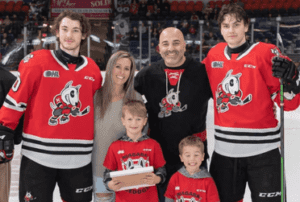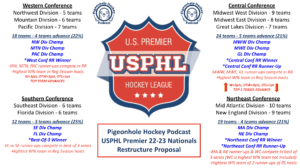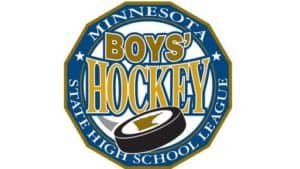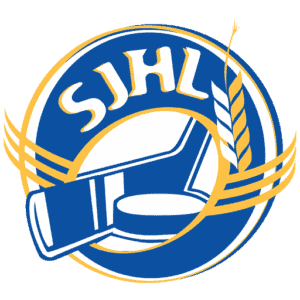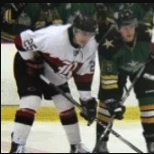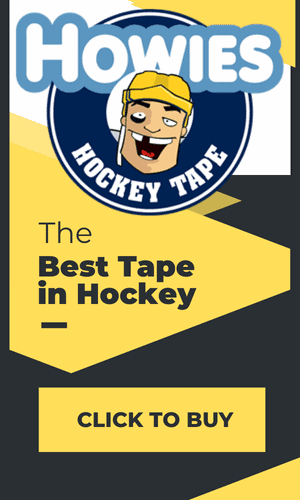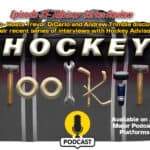My first experience with Junior Hockey came in the 1998-99 season when I was a 1980 birth year (hahahha) forward on the Laconia Leafs Jr hockey team, an expansion franchise in New Hampshire that played an independent schedule against College, EJHL, MJHL, Prep, and Canadian teams. Since the 2008-09 season I have had the opportunity to coach in the world of Junior Hockey. I’ve run the gamut from being an assistant coach to head coach to owner. I’ve been hired. I’ve been fired. I’ve been hired again from everywhere from renegade non-USA Hockey teams to established, elite Programs.
I’ve seen a lot of changes, and it’s been a great 10 years in this industry.
With this article I will look at 5 Myths associated with Junior Hockey, which is defined as the highest level of amatuer hockey in North America. These will include common questions asked by parents and players during the recruiting or introduction process. I will attempt to dispel some common misperceptions taken by outsiders and shed some light on what Junior Hockey is all about.
MYTH #1- Taking a Year Off
A common phrase I’ve heard from parents and players is, “My parents support me “Taking a Year Off”. Or, I’d like to “Take a Year Off” and play Junior Hockey.
Junior Hockey at it’s best should be a developmental and exposure opportunity to take an athlete from one level and promote them to NCAA or Professional Hockey. NCAA and Professional Hockey are extremely difficult levels to reach. 61 NCAA Division I schools participate in hockey, compared to 350 Division 1 Basketball schools. Another 6 NCAA DII Hockey schools and 84 Division III. How could something so difficult require a “Year Off”?
The reality is, it doesn’t. The best programs, which routinely place athletes into NCAA hockey have a rigorous daily structure designed to develop players both on and off the ice. With curated curriculums that feature comprehensive strength training programs, educational advancement opportunities, On- Ice skill and team practices, community service responsibilities, and much more… Junior Hockey is the mechanism which advances young men into college readiness.
Hockey players in college use this pathway to prepare them for college life. Take for example the APR, or Academic Progress Rate. This tracks all NCAA athletes, and holds institutions accountable for the academic progress of their student-athletes through a team-based metric that accounts for the eligibility and retention of each student-athlete for each academic term. Men’s Ice Hockey routinely scores at or near the top of this category when compared to their peers, with 10 Division I schools (out of 61) scoring recording scores of 1000 (including Clarkson, Colgate, Penn State, University of Nebraska- Omaha and all Ivy League schools). Comparatively Penn State, Colgate and UNO all scored 10-50 points lower in both Men’s Basketball and Football.
Consider also, Graduation rates.
NCAA men’s hockey student-athletes continue their remarkable academic success, posting a 94.6% NCAA Graduation Success Rate (GSR) in the latest data, released Wednesday by the NCAA.
That single-year data, which measures student-athletes who enrolled in 2011, is men’s hockey’s best single-year number since the NCAA began tracking GSR in 2002. It ranks second among all Division I men’s sports in this year’s data behind only skiing (95.2%)
NCAA Hockey Graduation Rate Reaches Record High
The numbers show being a College Student/ Athletes is a lot of work. Junior Hockey at its best, is also. Most importantly, it provides a structured environment where athletes can develop and mature into successful NCAA student- athletes, and college graduates.
MYTH #2- The Money Grab
We’ve overheard it said a thousand times…. Junior Hockey is a Money Grab. Consider this….
Average ice costs range from $185 per hour to over $400 per hour at many facilities. Equipment and apparel packages range per kid from $200-$500 per kid. Each bus rental is north of $1500.00. It costs money to broadcast games. Referees get paid. Coaches get paid. Trainers get paid. Scorekeepers get paid.
Junior Hockey teams practice from September to March. Nearly 27 weeks of daily ice time. They also play 40+ regular season games. Plus playoffs.
70% of all Junior Hockey in the United States is pay to play hockey, where organizations rely on nearly 100% tuition based revenue streams. The USHL and NAHL as well as much of Canadian Junior depends on sponsorship and gate revenue.
At the Tier III level, team operating budgets are routinely between 175k to 250k, with Tier I & II operating budgets much higher due to increased travel and staffing. With a budget at that size, and the majority of expenses reinvested directly into player experience… what is a “Money Grab”?
Commonly, small communities with Junior Hockey benefit the most economically. Small cities and towns where Junior Hockey franchises operate generally see a significant financial impact in their revenues. Studies have shown Junior Hockey’s financial impact into a community is in the millions. Not only does the local rink benefit from ice rental, apparel, food and equipment sales, but local businesses see a dramatic increase from travelling parents, fans, scouts, and teams. Hotels, restaurants, retail, and tourism all benefit from the Junior teams operation.
New studies related to the COVID-19 crisis have revealed a great deal about the effect of hockey and its economic impact.
$2.6 billion is the amount that moves directly between communities in Canada each year as a result of the sport of ice hockey.
Hockey related tourism in small towns is a key driver of the direct impact. Of the 2.6 billion in direct hockey-related impact, more than 1 billion flows into communities of less than 100,000 people.
This all poses the question… who benefits most from Junior Hockey? One example is this data provided by The Hockey Focus – Advancement To NCAA Hockey Independent Data Cuts Through The BS
- USHL (includes 50 players from USNTD))…………………….686
- North American Hockey League (NAHL)……………………… 301
- British Columbia Hockey League (BCHL)………………………272
- Alberta Junior Hockey League (AJHL)………………………….. 99
- Ontario Junior Hockey League (OJHL)…………………………..82
- United States Premier Hockey League (USPHL)/NCDC…..75
- Central Canada Hockey League (CCHL)………………………..57
- Prep/High Schools (HS)……………………………………………….31
It clearly shows that the 7 most common preparatory pathways to NCAA Division I hockey are various Junior Hockey leagues in both the US and Canada. Moreover, most of the franchises and leagues are based in communities with populations well below 100,000 (including places such as Jamestown, NY, Powell River, British Columbia, Sioux Falls, South Dakota and many other hockey outposts).
So… next time a parent claims Junior Hockey is a “Money Grab”, ask them for who?
MYTH #3- Tryouts
Every player wants to be the next Vincent Papale, the legendary hero of the Disney movie “Invincible”. An unknown but rugged underdog who attended an open tryout for the Philadelphia Eagles (his hometown) football team and made the roster. An unsung 30 year old rookie playing in the NFL.
Oftentimes 60-250 players attend “Main Camp”. With many Tier I & Tier II Junior teams Main Camps costing between $250-$500 per player, do tryouts pose a real opportunity to make the team?
Tier I and II Junior Hockey has a structured player acquisition process through Drafting, Tenders, and affiliates. For example, in the NAHL, the number of draft picks each team is allowed is based on the number of spots on that team’s pre-draft Protected List minus 30. (Example: If Club’s returner’s + tenders = 23, 30-23 = 7, then the team has 7 draft picks to get its roster up to 30). The main camp, a tryout generally in Late July or Early August is held, followed by a training camp in late August or early September. A 30-man roster is chosen in early September, with the final roster cut down to a 23-player roster by the end of September. Moreover, each NAHL team is allowed by USA Hockey to list up to four (4) non-U.S. citizens (imports) on its protected list (roster) at one time.
The basic math shows the 7 players on their 30 man (acquired through the draft, returning to the team, or tendered) protected list will be cut. That’s roughly 25%.
I love it when people doubt me. It makes me work harder to prove them wrong.
Derek Jeter Tweet
I am a firm believer in what the former Yankee Captain is saying. However, believing in yourself and investing in yourself, through self-improvement and hard work, is a better dollar spent than just attending a tryout. The math doesn’t validate chasing the opportunity many times, and more can be accomplished by having a great regular season and potentially getting drafted or tendered (through your off-season hard work and development), then by having just a great “Main Camp”.
MYTH #4- Coach Plays Favorites
When I was a kid I got no respect. The time I was kidnapped, and the kidnappers sent my parents a note they said, "We want five thousand dollars or you'll see your kid again."
Rodney Dangerfield Tweet
For many kids, playing Junior Hockey is the first time they are away from home, living on their own and standing (albeit with much help) on their own two feet. Players at the Junior Hockey level now have to be accountable for their own actions, habits and participation. The responsibility is theirs.
I’ve heard it many times about opposing coaches from parents and players. The phrase, “Coach Plays Favorites”. I’ve always asked myself… What do they mean by this?
“I guess a lot of people thought I was a Pat ( Hall of Famer Coach Pat Burns) favourite. I hope I was. But if he was unhappy with my play he let me know. There were a few nights when he nailed me to the bench, too. Like, some guys are always going to be a little more creative than others. Pat was fine with that. But he had a rule: In the first two or the last two minutes of a period, never lose the puck at the blue line. I remember this one time I lost the puck at the blue line early in the game, they came down and scored. And I didn’t see the ice again until the next period. He brought me in and said: “How am I going to tell my second- and third- and fourth-line guys that they have to pay the price for stupid mistakes if I treat you differently? You’re the guy they follow.” I understood.” - Doug Gilmour- Hockey Hall of Fame 2011
Doug Gilmour - Hockey Hall Of Fame 2011 Tweet
Hall-Bound Pat Burns Inspired Belief: Gilmour
I can not stress to kids enough the process of understanding who they are, finding a role, and accepting responsibility. Junior Hockey is the apex of youth hockey. It’s the top. All the lessons that you learned (or didn’t learn) are now on display, and it is your responsibility to the team you are on to give your best effort. Don’t deflect blame and take the easy way out. Don’t say the coach didn’t play me because I wasn’t one of his favorites. Good coaches have favorites who put the team ahead of themselves, accept personal responsibility, are loyal and honest, are talented and give their best effort. If you feel that you are not one of the coach’s “Favorites” remember it is easier to point a finger at someone then point the thumb at yourself. Take a look in the mirror and become a favorite.
MYTH #5- Home Away From Home
Most of the questions I get when recruiting and acquiring a player center around the billet or host family experience. Many of these relationships can be multi-year fulfilling experiences that build a bond between a young man and a family. However, some are not as rewarding. Generally, the billet experiences that are not rewarding usually begin with a lack of communication and clearly defined standards. Here are some of my Archetypes:
- Ideal- Nice stable environment where the player adheres to the clearly defined rules of the hosts. Can be any setting (family or single person) provided each individual involved understands and supports the experience. There is mutual support by both parties in this relationship.
- Best Buddy– In this environment, the host never says NO to your player, and the player takes advantage of the situation. Generally, these situations are one year and not recurring families, as the situation costs too much for the host to sustain.
- Hansel & Gretl- The family or renter that views this “opportunity” as a pathway to pay bills, rather than the definition provided by the organization. Generally, both parties come away from this experience scorned.
- The Dreamer– The host family or renter that views the player moving into their home as a person who can fill some void in their living experience. These players may be defined as “men” but they are still very much figuring out how to be an adult. Oftentimes, the dreamer goes out of their way to support the player, and can become a multi-year billeter.
- The Landlord– The person or family who has clearly defined rules, regulations and expectations, but does not go out of their way to nurturing a common understanding of one another. Generally, the player doesn’t walk away from this experience feeling tremendously connected to their host family, but both parties generally agree in the positivity of the experience.
USA Hockey Magazine provided a great set of guidelines in their January 2011 issue (below):
Avoiding Bitter Billet Battles
WHAT A BILLET FAMILY SHOULD DO
Establish a set of guidelines early on so the player knows what is expected of them.
Find out what types of foods the player likes to eat and understand the nutritional requirements of an elite athlete.
Understand a player’s practice and game schedule to plan mealtime.
Respect a player’s privacy and need for independence.
Create an open line of communication with the player’s parents.
Provide a safe place to air and dry a player’s equipment.
Make the player feel comfortable, not only in your home but in your community.
Be a good listener if a player is stressed about playing time, team issues, homesickness, etc.
Take an interest in the player’s season and go to games whenever possible.
WHAT A PLAYER SHOULD DO
Know what is expected and acceptable in billet family’s house.
Be respectful of your new surroundings. After all, you are a guest in someone else’s house.
Don’t take things for granted. Just because something may be acceptable in your own house doesn’t mean it is acceptable with your billet family.
Be willing to participate in family activities where appropriate.
Serve as a positive role model for younger children in the billet family.
Be willing to communicate with the billet family.
Don’t take out your problems on the billet family.
The host family experience can be extremely rewarding for players, family of player, host family, children of the host family, junior team, community, and renter. In the last 10 years I’ve had the opportunity to support kids and provide housing for players who are now playing college and in some cases professional hockey. Many of those players have made an indelible impact on the life of children and members of my family.
My words of advice for players going into this experience are this;
You are not a renter and that is not your room. You will soon discover when you are paying your own bills that the money you are contributing to the family is a very small portion of the total expenses they are incurring by having you there, so appreciate the roof over your head and treat the family with respect. Know that the parents, most likely, work all day and then see you at night. Make them enjoy having you as a member of the family. Be your best self.
My words of advice for families/renters going into this experience are this;
They may look like men, but most are still very much kids. You can help shape their experience by setting a positive example with structure, ground rules and expectations. Communicate with them honestly. You will get out of the relationship what you put into it.
In summation, Junior Hockey is a completely unique experience in the world of sports. Baseball, Football, Basketball… none of these have a similar developmental pathway as Hockey. Junior Hockey is one of the key contributors in the evolution of our sport, and the continued expansion of the game. From Coast to Coast in North America, Junior Hockey is in our communities. It helped shape thousands of men, and is a prime contributor to the success of the men who have matriculated onto college and pro hockey.
Andrew Trimble is the General Manager and Co- Owner of the New England Wolves Hockey Club. He is also the Owner of Scoring Concepts LLC, a New Hampshire based hockey training company that offers camps, clinics, private lessons and teams. He has coached at all levels from Learn to Skate to College Hockey. For more info on his teams and programs check out- www.scoringconcepts.com or www.ne-wolveshockey.com

